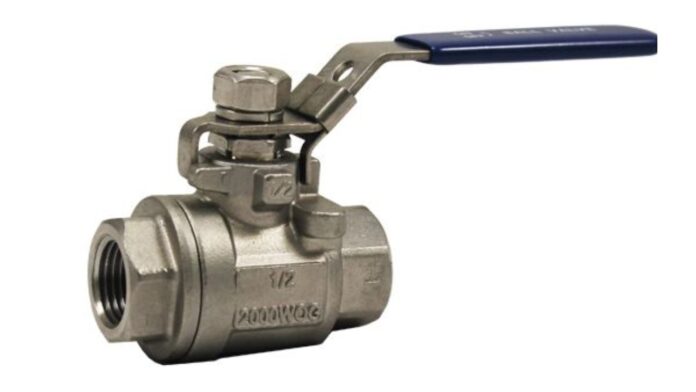Selecting the appropriate ball valve is a critical decision that will affect both the performance and safety of your application.
Whether you are directing the currents of water, oil, gas, or other fluids under intense pressure, the choice of valve becomes an important decision.
Thus, selecting a suitable high-pressure ball valve becomes a cornerstone of operational efficiency and reliability.
But the challenge lies in answering the question of how we can make sure things work smoothly in the world of high-pressure systems.
Imagine this: You’re overseeing an industrial operation where precision is paramount, where the slightest oversight can result in costly downtime or worse yet, safety hazards.
In such instances, choosing the right ball valve cannot be overstated.
Every fluid presents its own set of challenges. So, it is essential to address these nuances.
Table of Contents
Understanding High-Pressure Ball Valves
These ball valves are specially designed to handle robust environments where fluids are under significant pressure. These valves are commonly used in industrial settings where reliability and durability are paramount.
They are typically made from high-grade materials such as stainless steel to withstand the demands of high-pressure applications.
Factors to Consider
1. Pressure Rating
The first and most important factor to consider when choosing a ball valve is its pressure rating.
High-pressure valves are designed to handle specific pressure ranges, so it’s essential to match the valve’s rating with the operating pressure of your system. Exceeding the pressure rating can lead to valve failure and potential safety hazards.
2. Material Construction
The material construction of the valve is another critical consideration. These ball valves are often made from materials like stainless steel, which offer excellent corrosion resistance and durability.
Depending on your application and the fluids involved, you may need to choose a valve with specific material properties to ensure long-term reliability.
3. End Connections
These ball valves come with various end connection options, including threaded, flanged, and welded connections.
The choice of end connections depends on the piping system and installation requirements of your application.
Threaded connections are commonly used for easy installation and maintenance, but make sure to select the appropriate thread type and size for your system.
4. Seal Material
The seals and seats of ball valves play a crucial role in preventing leaks and ensuring tight shut-off. It’s essential to choose a valve with seals made from materials compatible with the fluids and operating conditions of your system.
Common seal materials include PTFE (polytetrafluoroethylene), which offers excellent chemical resistance and low friction properties.
Choosing the Right Valve
Now that you understand the key factors to consider, let’s delve into how to choose the right ball valve for your specific application.
- Determine the Operating Pressure: Start by identifying the maximum pressure that your system will experience during operation. This will help you narrow down the selection of valves with suitable pressure ratings.
- Consider the Fluid Compatibility: Take into account the type of fluid that will be flowing through the valve, as well as any chemical properties that may affect the material compatibility of the valve components.
- Evaluate End Connection Options: Choose the appropriate end connections based on the piping system layout and installation requirements. Threaded connections are versatile and easy to work with, but make sure they can handle the pressure and flow requirements of your system.
- Check Seal and Seat Material: Verify that the valve’s seals and seats are made from materials compatible with the fluid and operating conditions. PTFE seals are commonly used for their excellent chemical resistance and reliability.
- Assess Durability and Reliability: Look for valves manufactured from high-grade materials like stainless steel, with features such as blow-out proof stems and locking handle mechanisms for added safety and reliability.
Conclusion
The selection of the right high-pressure ball valve is not just a choice but a pivotal decision that can significantly impact the efficiency and safety of your operations. As we navigate the complexities of high-pressure systems, it becomes evident that each component, including the ball valve, plays a crucial role in ensuring seamless functionality amidst challenging environments.
By understanding the key factors such as pressure rating, material construction, end connections, and seal materials, you can make an informed decision tailored to your specific application requirements. Whether you’re dealing with water, oil, gas, or other fluids under intense pressure, choosing the appropriate valve is essential for maintaining operational reliability and preventing costly downtime or safety hazards.
In essence, selecting the right ball valve is about more than just functionality; it’s about safeguarding your operations and maximizing efficiency. With careful consideration and attention to detail, you can choose a valve that not only meets but exceeds your expectations, providing long-term durability and reliability in even the most demanding environments.
